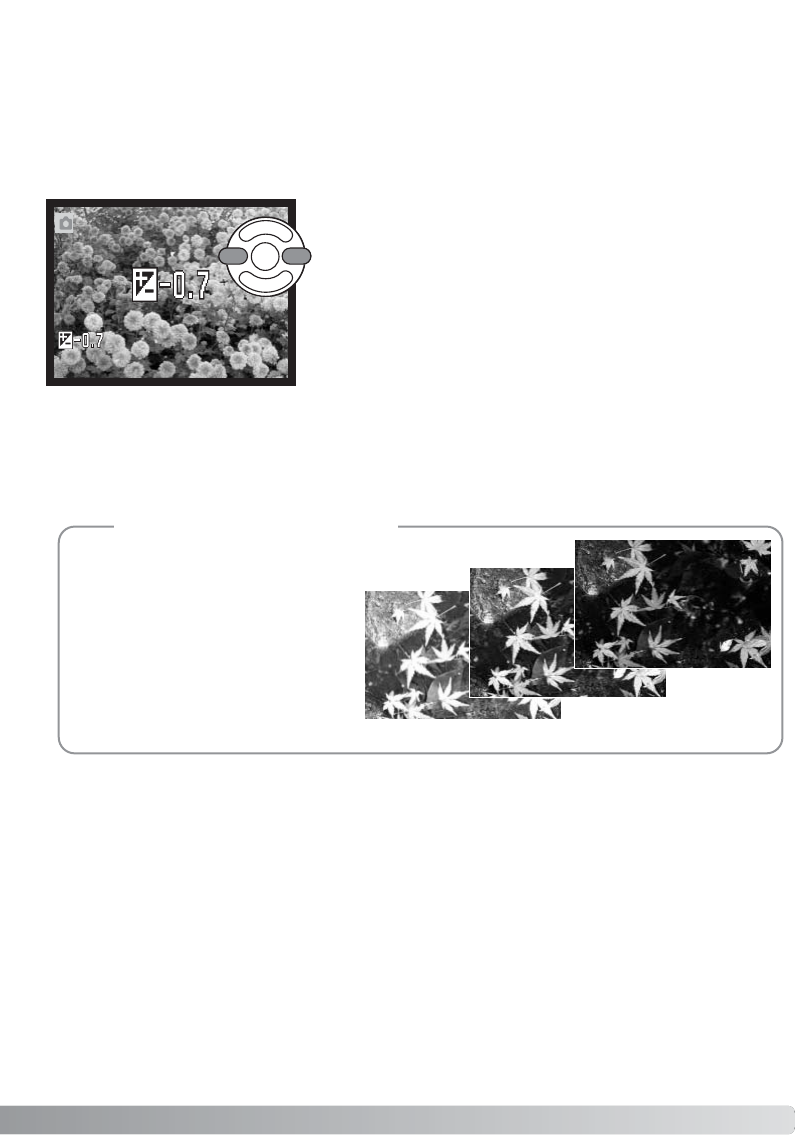
41
To adjust the exposure, press the left or right controller key;
the exposure-compensation screen appears.
Use the left/right keys of the controller to adjust the exposure-
compensation value. Changes to exposure are visible in the
live image.
Press the shutter-release button partway down or press the
central button of the controller to set the adjustment.
The camera exposure can be adjusted to make the final picture lighter or darker by as much as
±2Ev in 1/3 increments. Exposure compensation can only be used with Digital Subject Programs,
the P, A, and S exposure modes. With Digital Subject Programs, exposure compensation is reset
when the exposure-mode dial is moved to another position or the camera is turned off. In P, A, and
S exposure modes, exposure compensation remains in effect until reset.
Exposure compensation
When adjusting the exposure, the amount of compensation is shown in EV (p. 53). After the setting
is made, the shutter-speed and aperture displays indicate the actual exposure. Because the expo-
sure can be adjusted in fine steps, the shutter speed or aperture value displayed may not change.
When set to any value other than zero, the exposure-compensation indicator remains on the moni-
tor as a warning.
Exposure compensation is used
when the camera’s exposure meter is
deceived by high-key or low-key
scenes. In the example, the dark
water caused the camera to overex-
pose the image making it too bright
and washed-out. By compensating
the exposure, detail is brought out in
the leaves, and the stones and water
appear richer.
Camera notes
–2.0Ev
–1.0Ev
Camera exposure


















